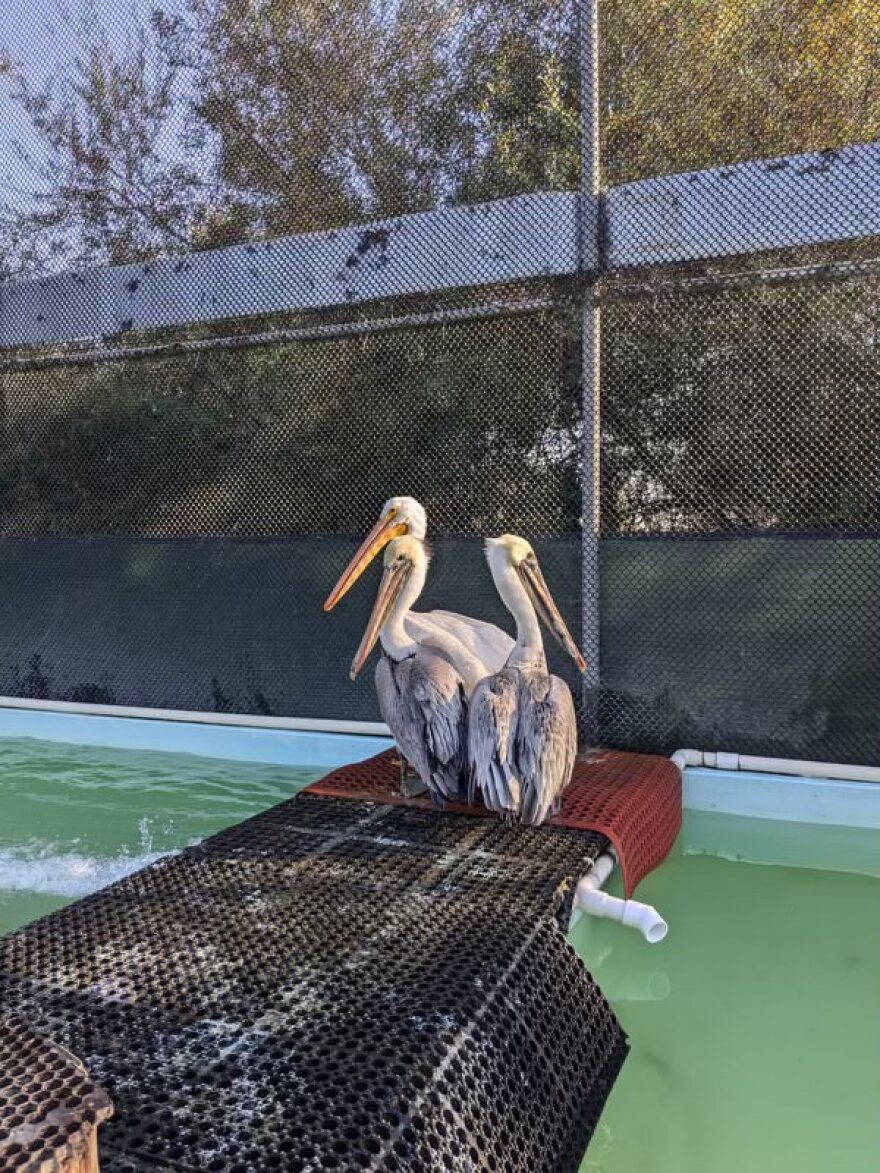The seabird sure had an un-pheasant journey.
It’s normal to see pelicans in the Reno-Tahoe area. They’re big aquatic birds with long beaks and large throat pouches. They migrate from the coast and go inland during the winter to stay warm.
So it became clear to birders this pelican was feeling under the feather and wasn’t supposed to be here this late in the year. Unlike Nigel from “Finding Nemo,” who scooped up Dory and Marlin, this bird, nicknamed “Whitey” by the locals, was in need of saving.
The rescue mission led by the nonprofit Tahoe Institute for Natural Science (TINS) involved several kayakers hacking through the ice with their paddles and corralling the pelican toward land.
TINS outreach director Sarah Hockensmith provided support safely from the shore.
“If I was to learn anything from this rescue is that it takes a team to catch Pelican, and it’s not easy,” Hockensmith said.

Chris Smith, a lecturer at the University of Nevada, Reno’s Lake Tahoe campus, who has experience with large birds, made the catch. But there was some waterfowl play as Whitey drew blood and scratched his captor above the eye. Hockensmith said at one point, the lecturer’s head was entirely in Whitey’s mouth – that must’ve been a hoot to see.
Whitey may not be a cat, but he definitely has nine lives. Pelicans typically hunt in groups, but Whitey was fishing solo, and a bad winter storm was on its way, increasing the risk of frostbite. Hockensmith said researchers usually let nature take its course…
“But when you see an injured, helpless animal that’s taking that much time to survive and do its best to thrive in really unfortunate circumstances, sometimes it's best just to get outside of our bubble and do something to help beyond just our personal lives,” Hockensmith said. “And whether that is helping the Pelican Whitey get back on his feet, literally, or even just reaching out to a neighbor or helping a friend, these are ways that make it so the human race and just people in general, can do good in the world,”
Whitey was swaddled in a dark fabric hood, put into an IKEA bag, and then a crate and driven more than two hours to the nonprofit International Bird Rescue’s pelican infirmary in Fairfield, California.

The seabird had largely healed a left leg fracture on his own, but that affected his ability to fly. Pelicans need a running start before taking flight. Dr. Rebecca Duerr, the director of research and veterinary science, said it’s actually a common injury for pelicans. They don’t always have soft landings.
“They’re a little awkward. They are kind of a big, gangly bird, and they’re quite heavy,” Duerr said.
Whitey weighs about 16 pounds and has a wing span of 8 feet. Now, because of his size, his biggest problem is making friends.
“Our brown pelicans seem like they’re a little afraid of him, just because he’s bigger,” Duerr said. “He’s here with about 10 pelicans that are California Brown Pelicans. They’re flying over his head and avoiding him, maybe he’s taking a swipe at them. White Pelicans can be kind of cantankerous beasts.”
Duerr expects Whitey to fully recover in less than a month. Then, in egg-sighting news, he’ll be released into the wild with a new flock of white pelican friends.
Produced with assistance from the Public Media Journalists Association Editor Corps funded by the Corporation for Public Broadcasting, a private corporation funded by the American people.




